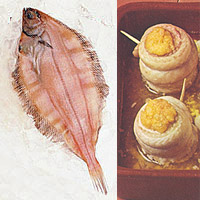Gluten Free
What does following a gluten-free diet mean? That you're embarking on an easy diet with a wide range of health-promoting effects. Instead of dwelling on what you’re giving up, consider that you’re going to enjoy a whole new world of delicious food options to meet your special dietary needs. You’ll be eating seasonally, choosing more fresh fruits and vegetables, focusing on meats, seafood, poultry, legumes, lentils, corn, and rice, and discovering fascinating ancient grains such as quinoa, amaranth, and millet. You’ll be able to eat potatoes, eggs, most cheeses, even chocolate (!)—and enjoy them without guilt because you’ll be taking good care of your body. In fact, you’ll probably end up eating—and feeling—better than ever!
Visit this page for more information about living Gluten Free
---
We carry a large variety of gluten free items, the brands listed below represent just some of the offerings we carry















More Diets
Flounder

Varieties
The flounder family is made up of many species of fish. In the United States, East Coast varieties include gray sole (also called witch flounder), winter flounder (also called blackback), American plaice (also called dab or sand dab), yellowtail flounder (also called dab or rusty flounder), summer flounder (also called fluke), and southern flounder. West Coast varieties include petrale sole, sand sole, English sole, Rex sole, Pacific sand dab, Dover sole (not to be confused with the English fish of the same name), and California flounder. True Dover sole comes from England, and sand sole from France.
Most flounders are small, and thus the fish is generally sold whole, fresh or frozen, trimmed of head and fin bones. The larger varieties may be available as fillets—also known as quarters—or halves, which are two fillets connected by a thin strip of gristle.
Copyright © 2025 TraceGains, Inc. All rights reserved.
Learn more about TraceGains, the company.
The information presented in the Food Guide is for informational purposes only and was created by a team of US–registered dietitians and food experts. Consult your doctor, practitioner, and/or pharmacist for any health problem and before using any supplements, making dietary changes, or before making any changes in prescribed medications. Information expires December 2025.











